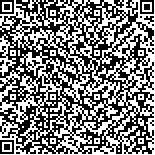何雪常,欧阳辉,沈龙彬,等.互联网管理下的手工作业训练对脑卒中患者感觉障碍及心理状态的影响[J].中华物理医学与康复杂志,2021,43(5):406-410
扫码阅读全文

|
| 互联网管理下的手工作业训练对脑卒中患者感觉障碍及心理状态的影响 |
|
| |
| DOI:10.3760/cma.j.issn.0254-1424.2021.05.005 |
| 中文关键词: 互联网 手工作业训练 脑卒中 感觉障碍 心理状态 |
| 英文关键词: Internet instruction Handicraft training Stroke Sensation disorders Mental status |
| 基金项目:广东省中央引导地方科技发展专项资金(KTP20190231);中国残联课题残疾人辅助器具专项(CJFJRRB22-2019) |
|
| 摘要点击次数: 5878 |
| 全文下载次数: 7385 |
| 中文摘要: |
| 目的 探讨互联网康复平台管理下的手工作业训练对脑卒中后遗症期患者感觉障碍、心理状态及生活质量的影响。 方法 75例卒中后遗症期伴感觉障碍患者按随机数字表信封法分为普通训练组(26例)、手工训练组(26例)、互联网+手工训练组(23例)三组,研究过程中普通训练组脱落2例,手工训练组脱落1例。普通训练组给予常规康复治疗和传统作业训练,手工训练组给予常规康复治疗和手工作业训练,互联网+手工训练组给予常规康复治疗和互联网康复平台管理下的手工作业训练。常规康复治疗包括运动训练和感觉训练,传统作业训练包括木插板、磨砂板、红绿豆分拣训练,手工作业训练包括数字油画、不织布(无纺布)花、丝网花、衍纸画训练;所有患者均训练4周,每周训练5 d,每日2次(上午行常规康复治疗,下午行传统作业训练或手工作业训练或互联网管理下的手工作业训练),每次40 min。分别于治疗前和治疗4周后(治疗后),采用Fugl-Meyer感觉功能评定量表(FMA-S)、汉密尔顿焦虑量表(HAMA)、改良Barthel指数(MBI)以及36项简明健康问卷调查(36-item short form health survey,SF-36)量表中的生理健康总评(PCS)和心理健康总评(MCS)评分对3组患者的感觉功能、心理状态、日常生活活动(ADL)能力以及生活质量进行评定和比较。 结果 普通训练组、手工训练组和互联网+手工训练组三组患者治疗后的FMA-S评分[(13.13±3.21)、(15.08±3.10)和(15.04±2.82)分]、HAMA评分[(9.50±2.25)、(8.24±1.94)和(7.00±2.11)分]、MBI评分[(84.71±12.27)、(91.36±8.14)、(91.22±10.77)分]及PCS评分[(72.16±14.06)、(73.79±12.46)、(73.27±12.38分)]和MCS评分[(60.86±20.32)、(70.88±15.99)、(80.78±11.34)分]均较组内治疗前明显改善(P<0.05)。治疗后,手工训练组和互联网+手工训练组的FMA-S、HAMA和MBI评分均较普通训练组明显改善(P<0.05),且互联网+手工训练组HAMA和MCS评分均较手工训练组明显改善(P<0.05)。 结论 互联网管理下的手工作业训练更能有效改善脑卒中后遗症期感觉障碍患者的感觉功能、心理状态及生活质量。 |
| 英文摘要: |
| Objective To explore the effect of handicraft training administered over the Internet on sensation disorders and on the mental status and life quality of stroke survivors. Methods A total of 75 stroke survivors in the sequelae stage and with sensory disturbance were randomly divided into a general training group of 26 (group A), a handicraft training group of 26 (group B), and a handicraft training group of 23 using Internet instruction (group C). In addition to 40 minutes of routine physical and sensory training rehabilitation every morning, groups A and B were given traditional training and handicraft training, while group C was given handicraft training delivered over the Internet for 40 minutes every afternoon, five days a week for 4 weeks. The traditional training involved inserting wooden boards, plate grinding, as well as sorting beans. The handicraft training involved digital painting, making non-woven flowers, silk screening flowers and paper-rolling. Before and after the 4 weeks of treatment, all of the subjects were assessed using the Fugl-Meyer sensory assessment (FMA-S), the Hamilton Anxiety Scale (HAMA), the Modified Barthel Index (MBI), and the physical component summary scale (PCS) and mental component summary scale (MCS) of the 36-item short-form health survey. Results After the treatment, significant improvement was observed in their average scores of all three groups in all of the assessments. Groups B and C showed significantly greater improvement in the average FMA-S, HAMA and MBI scores than group A. And the average HAMA and MCS scores of group C were significantly better than those of group B. Conclusion Handicraft training delivered over the Internet can improve the sensory functioning, mental status and life quality of stroke survivors in the sequelae stage with sensory disturbance. |
|
查看全文
查看/发表评论 下载PDF阅读器 |
| 关闭 |
|
|
|